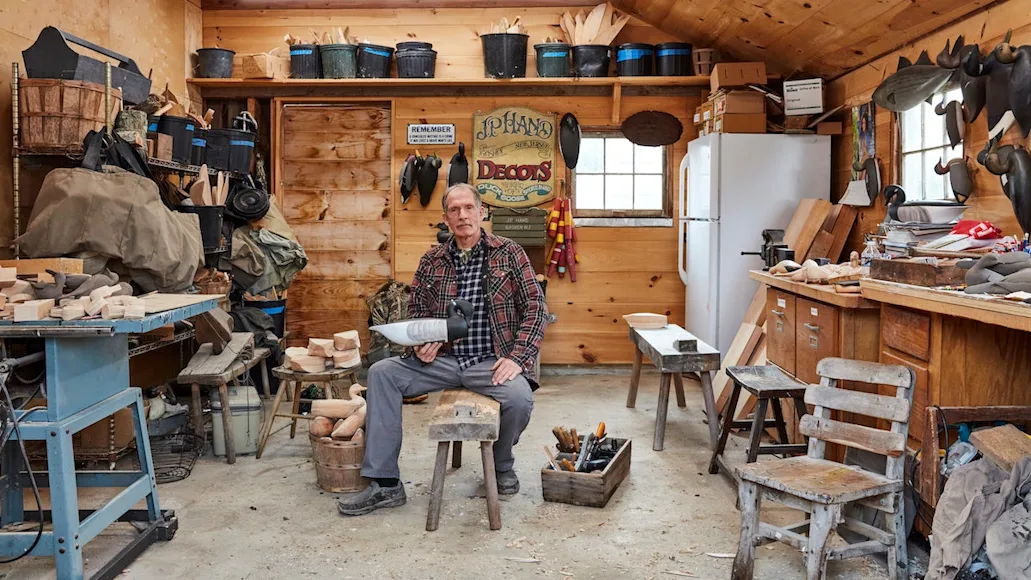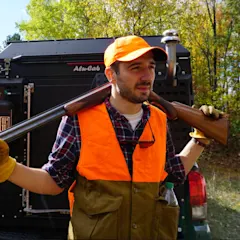_We may earn revenue from the products available on this page and participate in affiliate programs. Learn more ›
_
J.P. HAND sits at his workbench placing a freshly painted rig of 10 brant decoys into a slot bag while we get ready to hunt in the morning. He constructed each brant from three pieces of Atlantic white cedar with the kind of tools most people have in their woodsheds—a hatchet, some knives, and a bit of sandpaper. But when you pick one up, it’s light, as a bird is light, and looks so natural it’s as if it hatched from a wooden egg.
Everything about Hand’s shop seems to be from the past. The furniture looks as though it was made more than a century ago, and there’s a noticeable lack of power tools, save for a band saw, a drill, and a table saw being used only as a table. Yet the decoys he makes, and the techniques he uses to make them, are as relevant as ever.
Store-bought plastic decoys, with detailed wings and feathers, may look like ducks, but Hand’s wooden decoys exude life and attitude. Each of them displays a kind of personality—a mixture of the bird’s and his own. Hand started carving at 17 when he couldn’t afford to buy decoys, and now, at 68, he’s made a living carving and guiding out of his home and small farm near Cape May Court House, New Jersey.
He is also a historian, tracing his family’s history back 325 years to when the first of his ancestors settled on the South Jersey coast and eventually started carving decoys themselves. Today, he sells his decoys to hunters and collectors all over the world and has taken on a number of apprentices.
Like any good artist, Hand knows how to look at things. He is constantly observing wild birds at his farm and on the saltwater marshes near his home, and he is always looking for ways to use the natural materials he finds nearby to portray them. Above all, he can see the character of a bird and freeze it into a wooden decoy that somehow appears to have all the movement of the real thing.
**Read Next: Q&A: Jerry Talton on Carving Decoys And Carrying on Tradition
**
The result of his work is best described by Hand’s friend and fellow carver Pete Peterson, who left me this note before I headed home after our hunt: “A hand-carved decoy is poetry in the making and magic on the water—a man’s autograph in wood.”
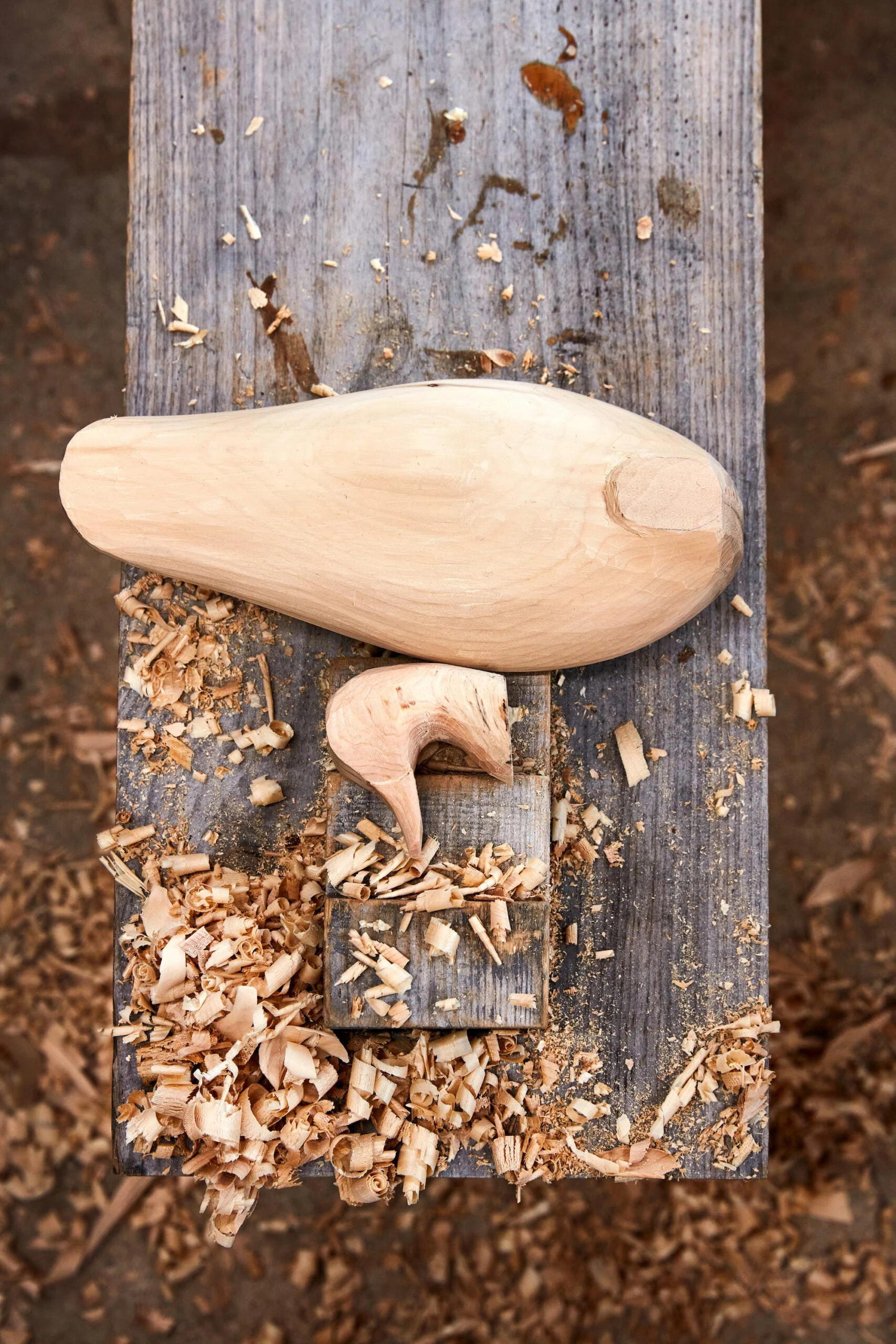
A teal decoy in progress on a chair maker’s bench—an age-old workbench design likely passed down from European colonists. The stepped block gives the carver something to brace a decoy against while carving. Christopher Testani
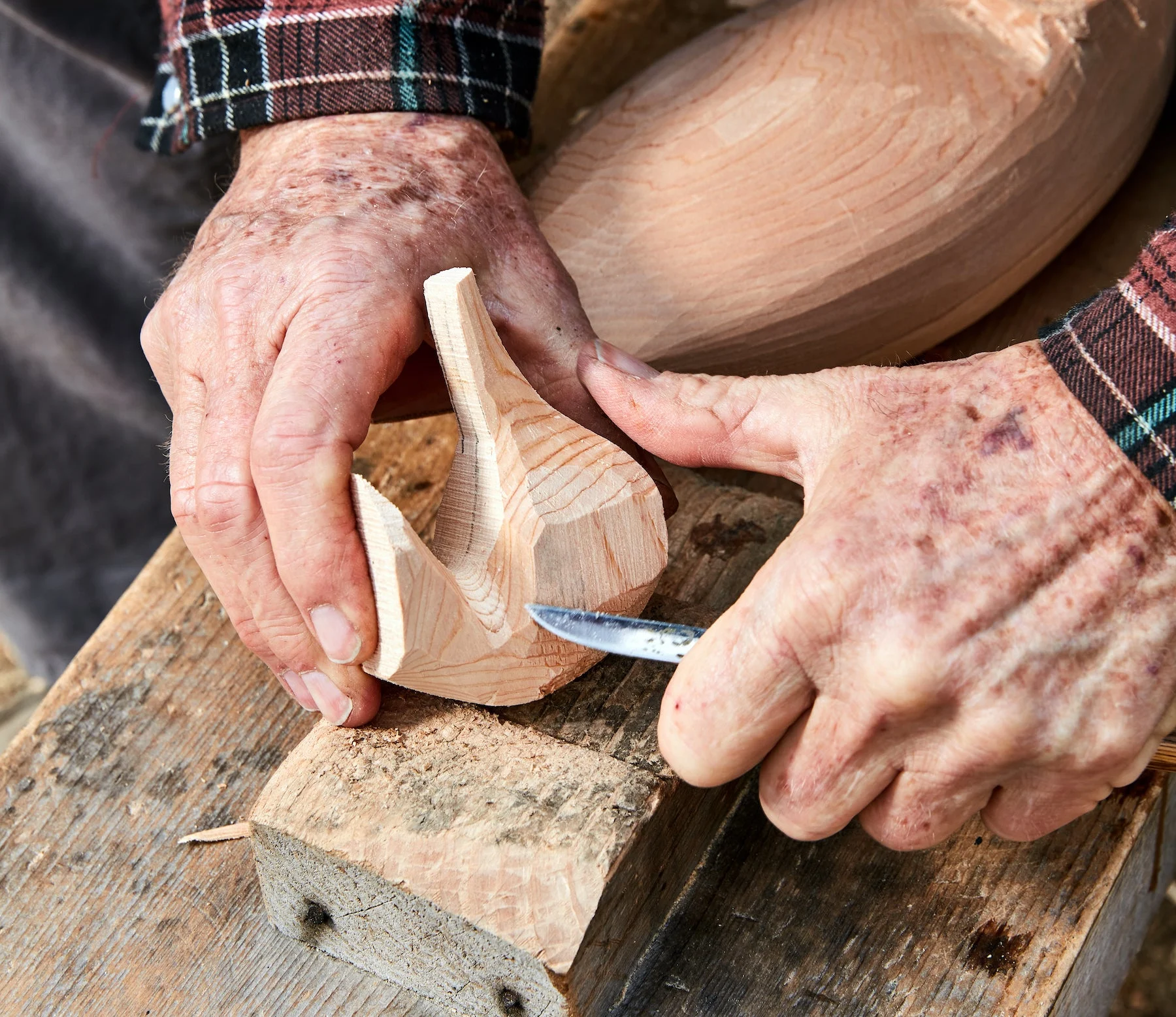
Hand puts the finishing touches on a teal decoy head with a carving knife. Christopher Testani

Hand glues and nails a decoy head onto a body. After the glue sets, He’ll finish carving the decoy and blend the seams until it feels as though it’s made from one piece of wood. Hand doesn’t use wood filler or glass eyes on his decoys. Christopher Testani

Hand examines a half-finished decoy before attaching the head. South New Jersey decoys like Hand’s are traditionally hollow and made from three pieces of Atlantic white cedar. Market hunters and outfitters of the late 1800s and early 1900s prized hollow-bodied decoys for their lightweight portability. Christopher Testani
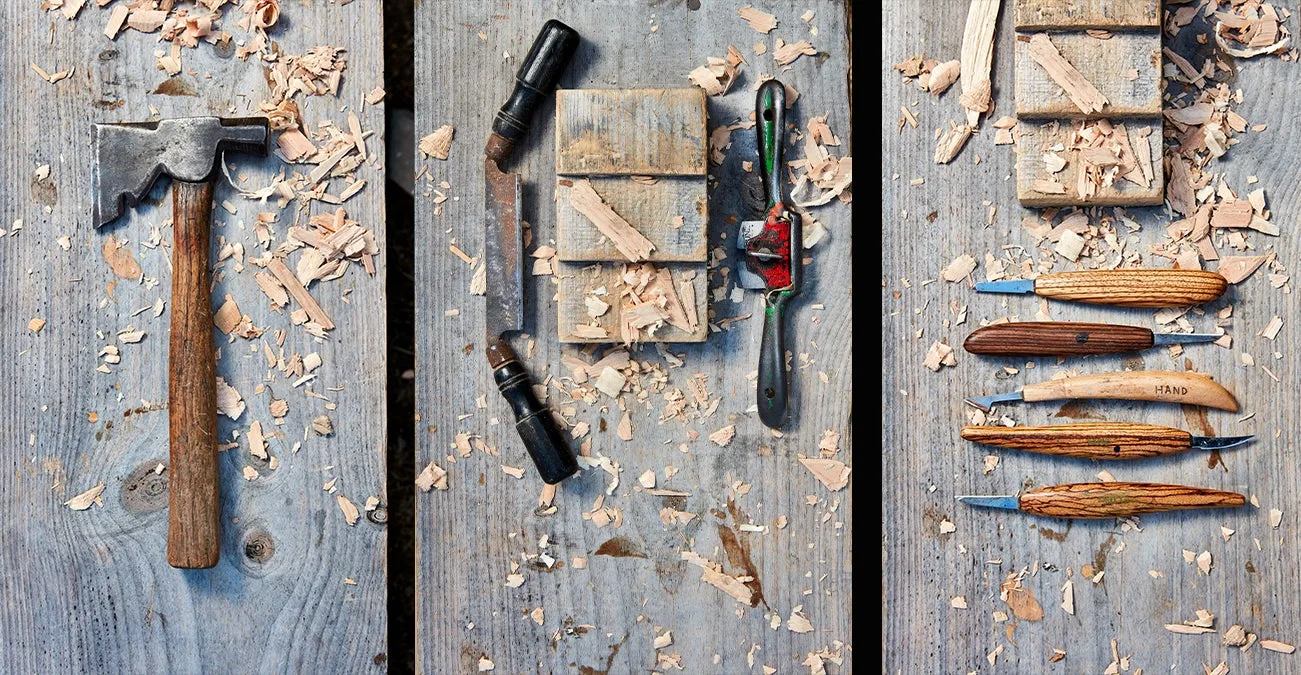
Left: Hand can rough out a decoy with a hatchet faster than most people can split kindling. Middle: After he gets the basic shape, he switches to a spokeshave for greater control. Right: Hand uses carving knives to shape a decoy head and tail. Christopher Testani

A drake mallard decoy. Christopher Testani
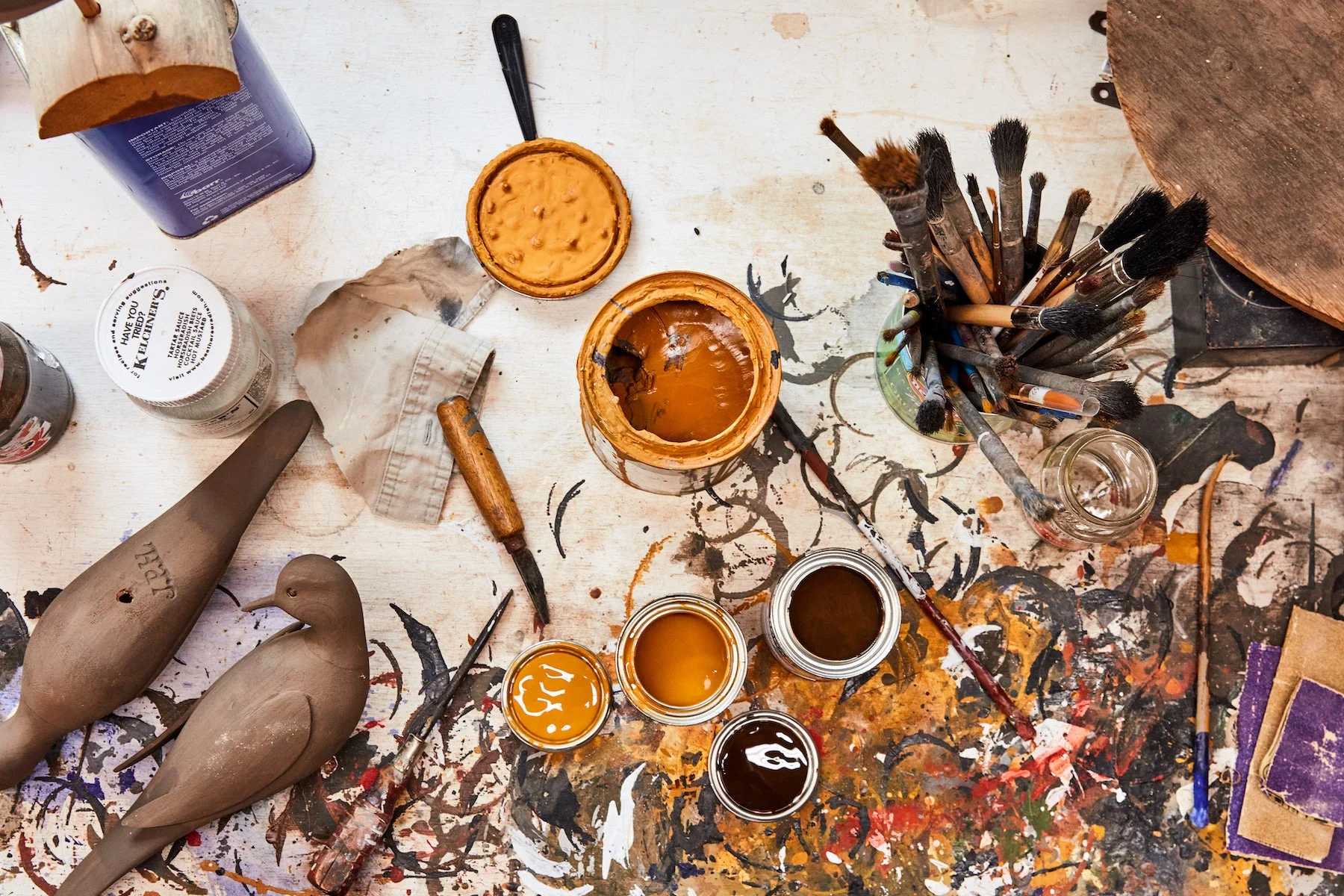
Hand’s paints and brushes with two primed dove decoys. Christopher Testani
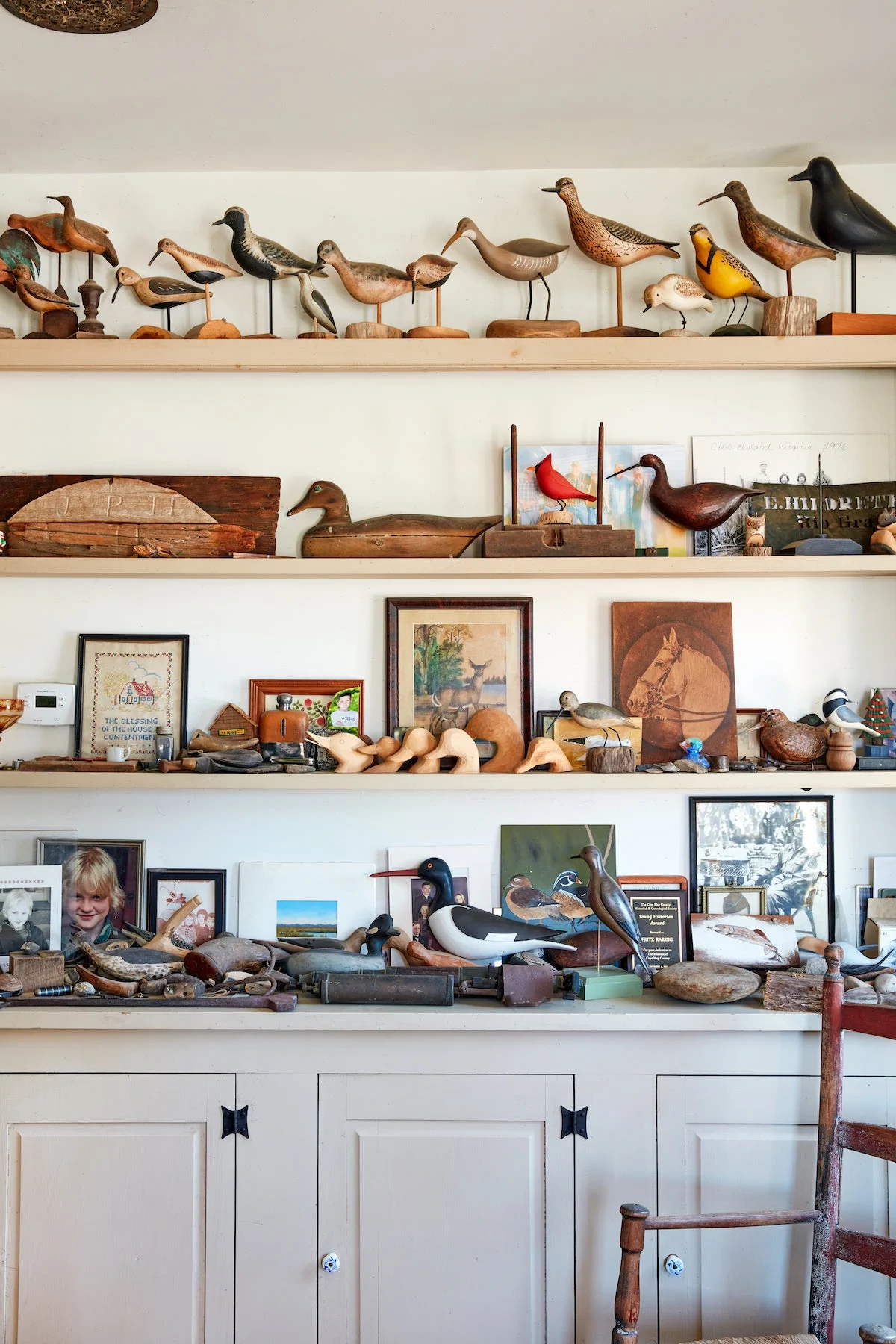
Hand’s house and dining room are filled with treasures like his collection of shorebirds and antique decoy branding irons. Christopher Testani
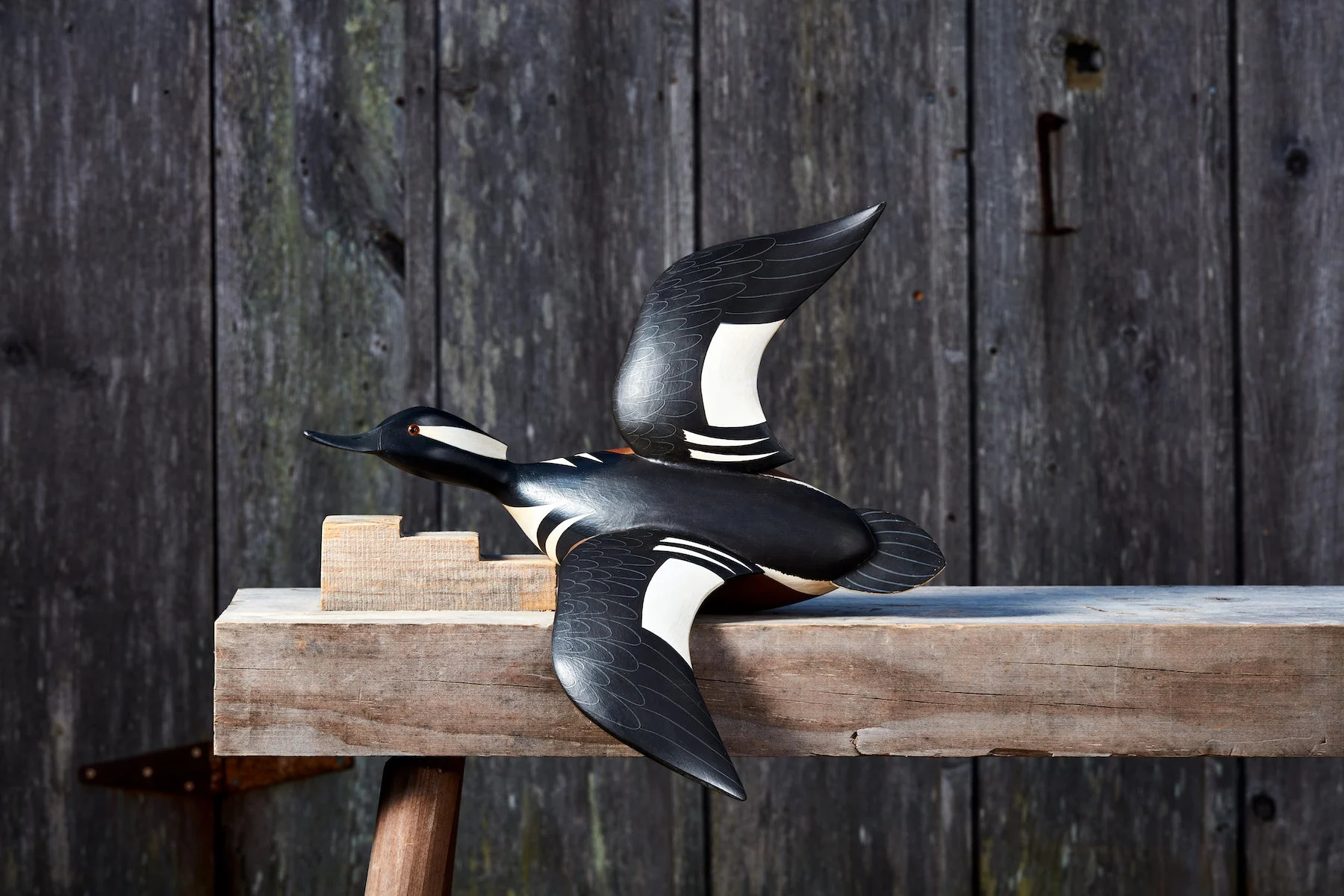
One of Hand’s “flying duck” mergansers. Christopher Testani
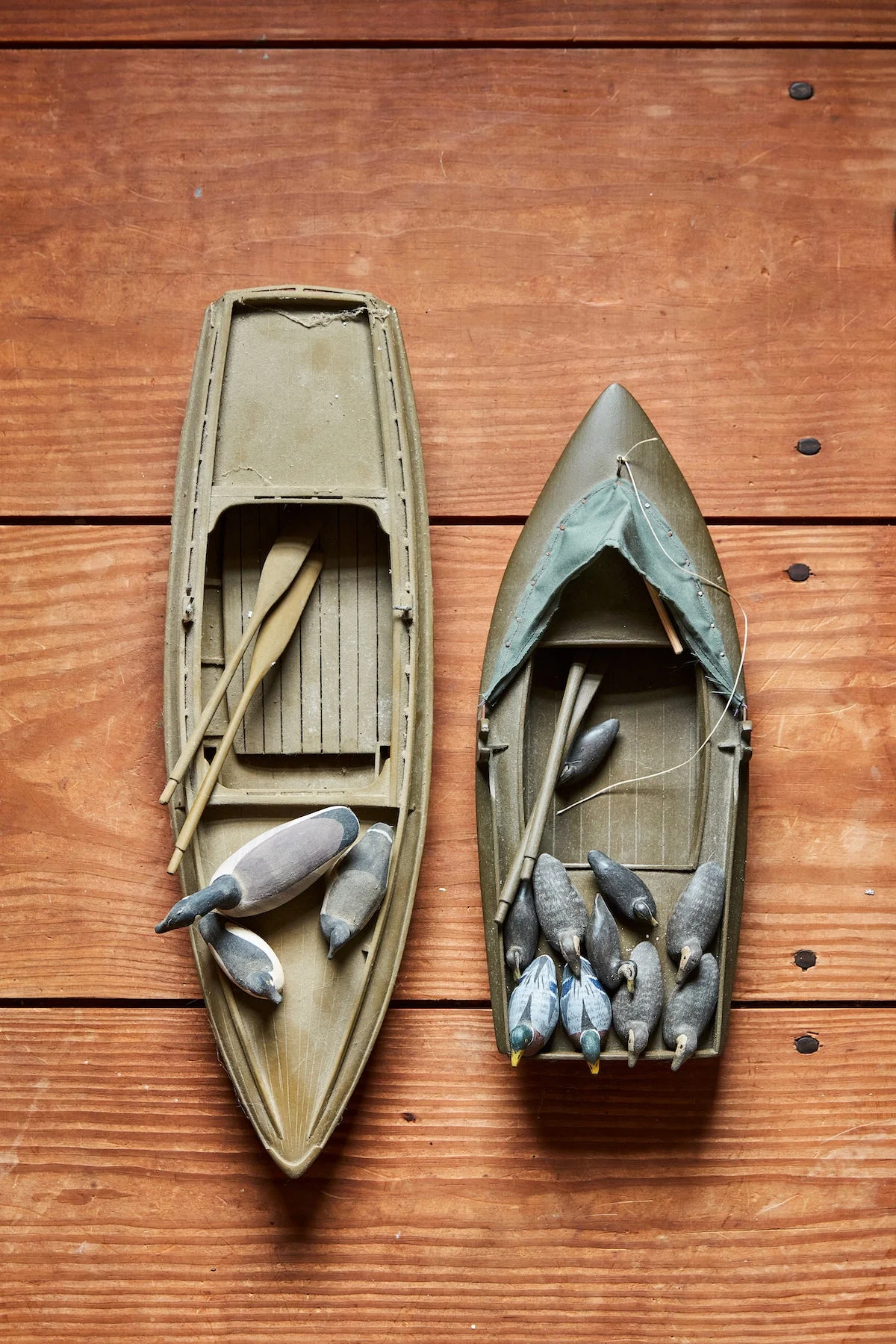
A pair of scale-model sneakboxes complete with miniature hand-carved decoys. Christopher Testani
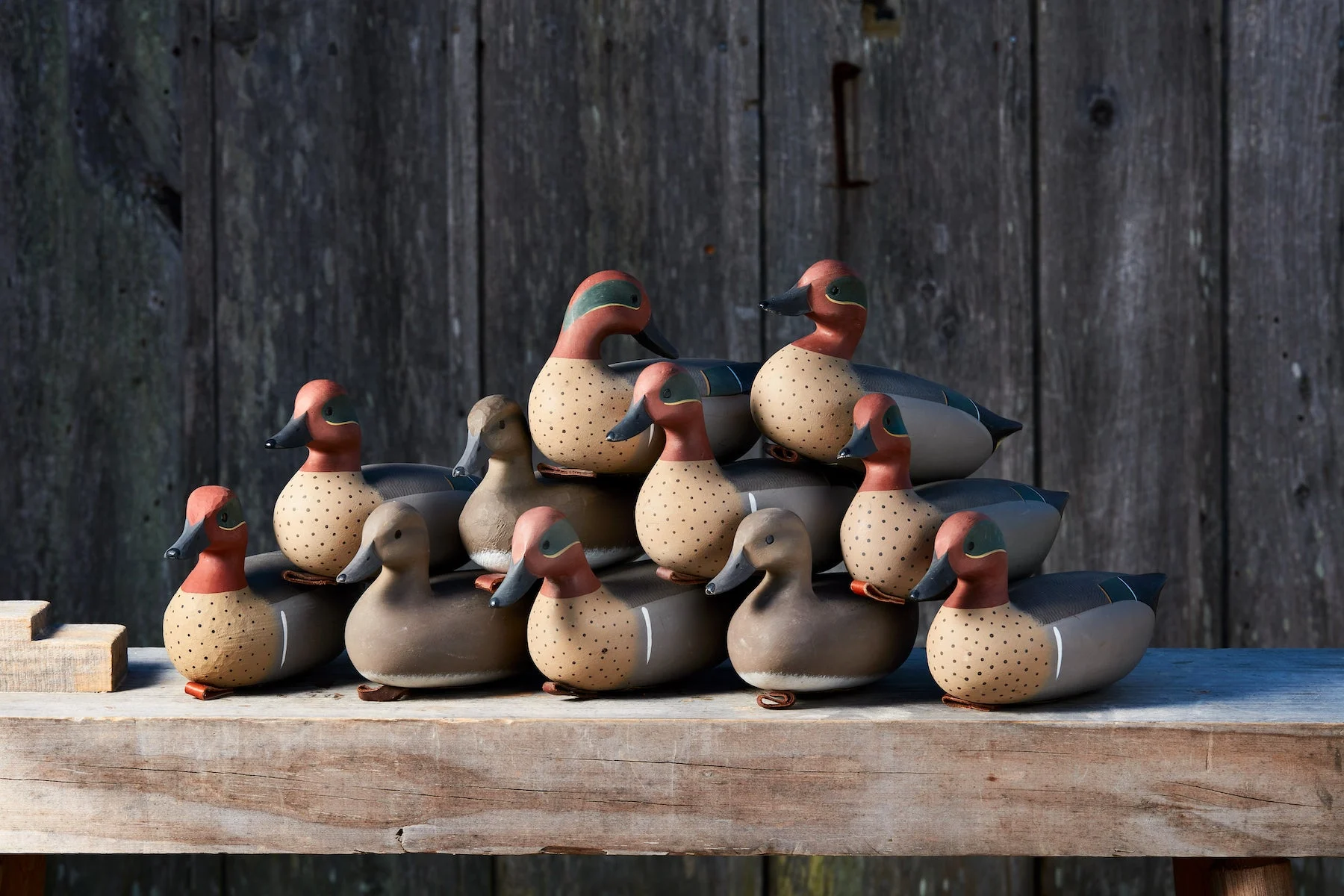
Hand’s personal rig of greenwing teal. Christopher Testani
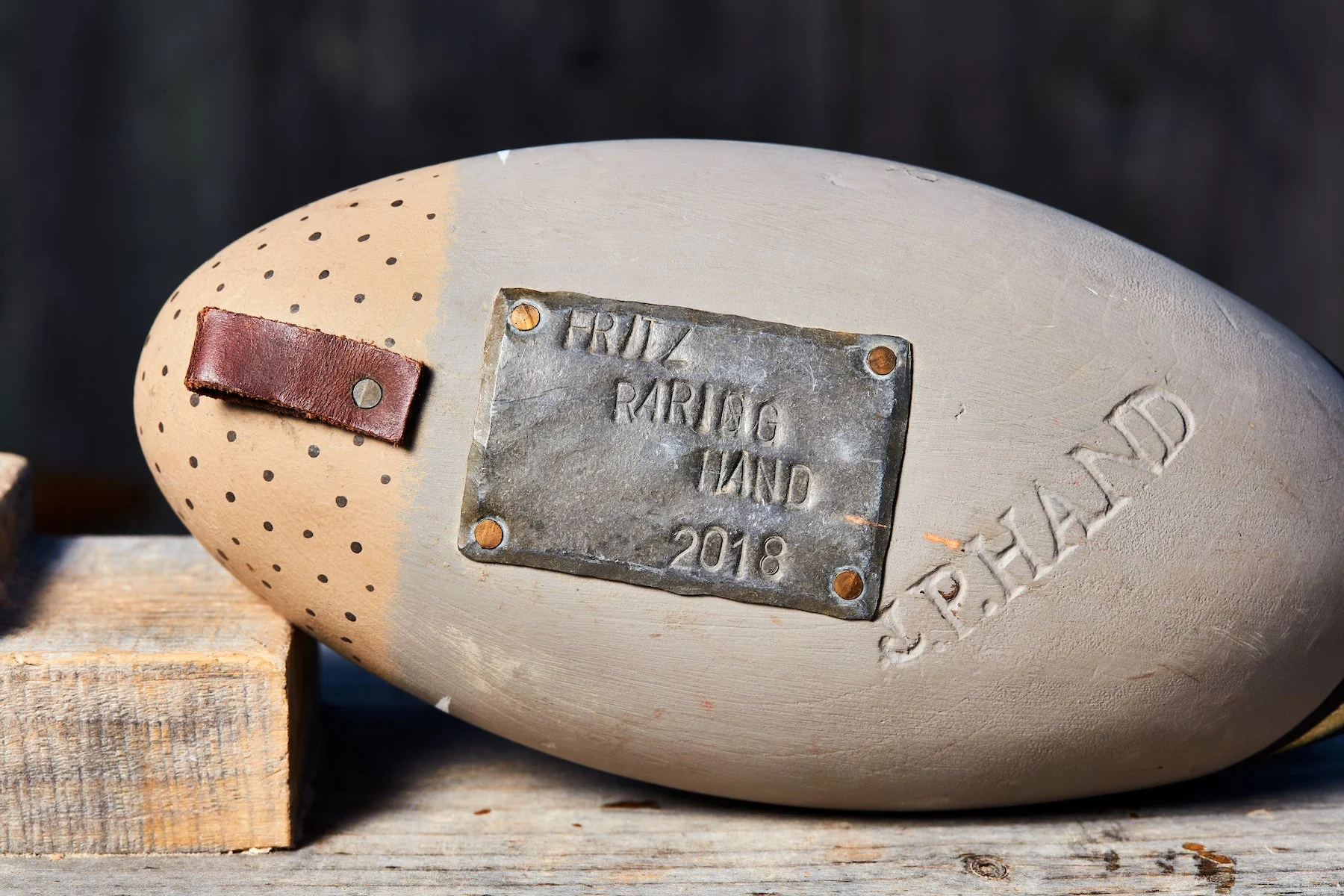
The ballast on a greenwing teal from Hand’s hunting rig. Hand sells most of his decoys, but he stamps his son’s name on the ballast of the ones he wants to keep and pass down. Christopher Testani
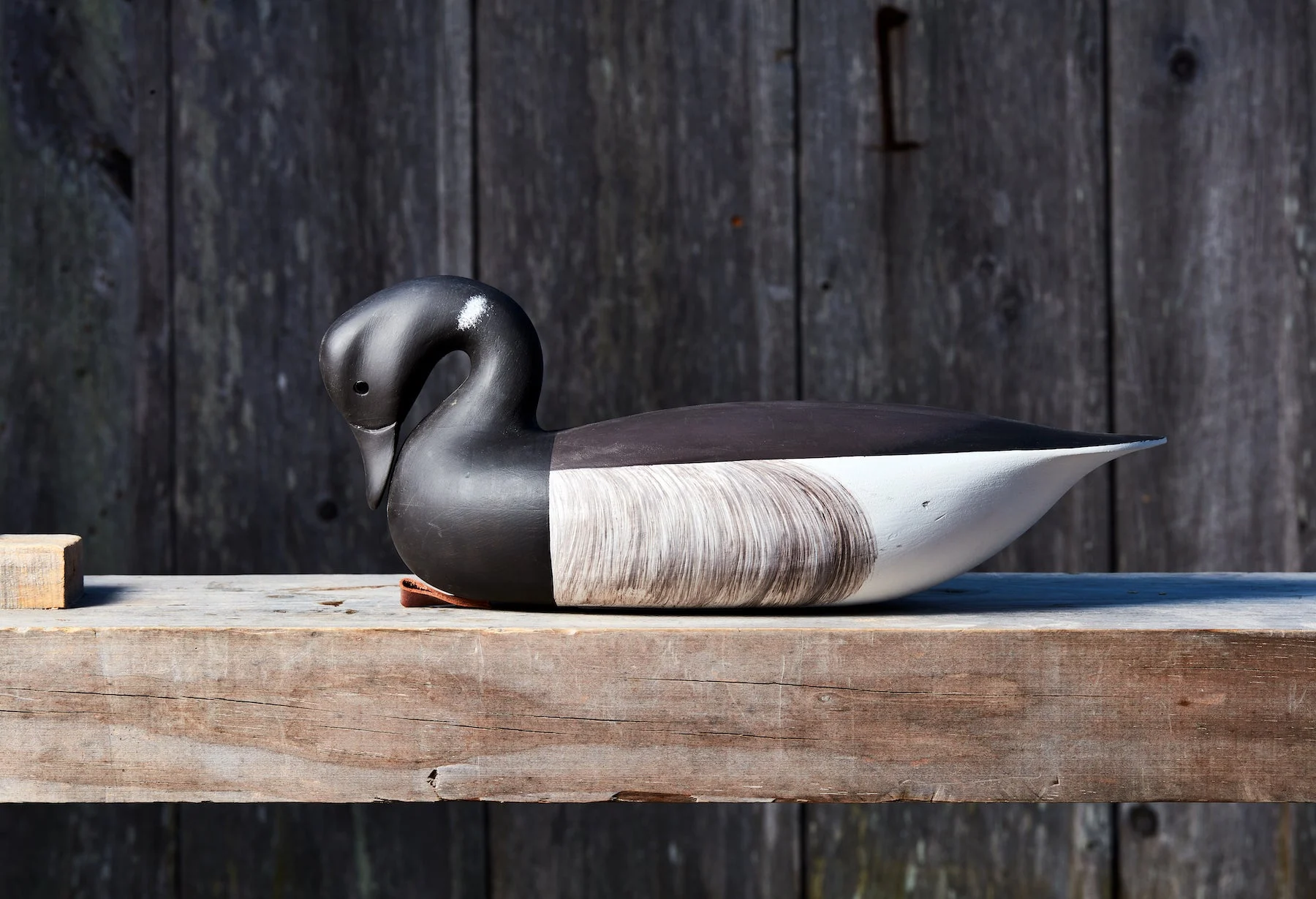
An Atlantic brant with Hand’s signature snaky-head neck shape. Christopher Testani
_This photo essay originally ran in the Home Issue
of_ Field & Stream_. Read more F&S+
stories._

